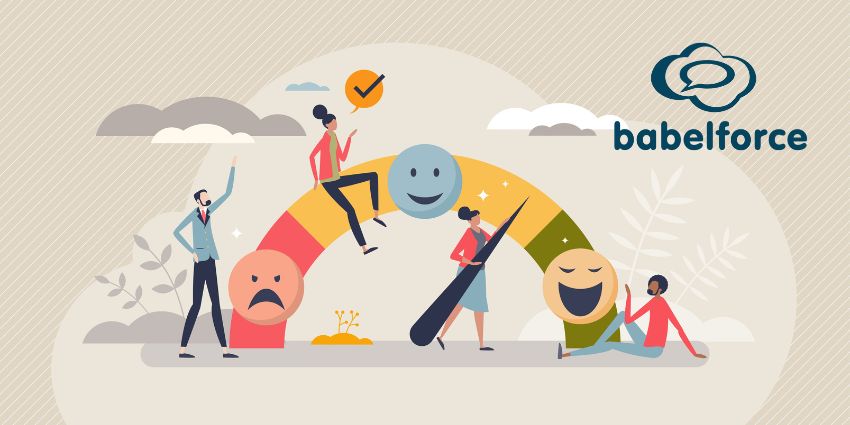Composable platforms enable businesses to outline and build the precise process that they want their tool/system to deliver.
In doing so, they challenge solutions that work within the parameters of the existing settings.
Diving deeper, Pierce Buckley, CEO & Co-Founder at babelforce, likened it to Lego building blocks:
“Instead of looking for a process on a page, the business starts by defining the process it would love to have. The platform then provides the ability to compose that process from what is essentially Lego or a set of building blocks that can be entirely customizable.”
babelforce has applied this concept to contact center platforms, giving IT teams far greater versatility and a much firmer grasp on customer service experiences.
Gartner recently recognized babelforce as a “Cool Vendor” for its efforts in bringing this forward-thinking approach into the contact center space.
CX Today also tipped its cap to the provider in naming it one of its Top CCaaS Vendors for 2023.
Yet, that raises the question; why has it resonated so well? Julian Hertzog, Head of Sales at babelforce, believes that – while there are many reasons – its role as a “simplification” tool is central to its success.
In the current contact center climate, that is indeed a powerful concept.
Within the Chaos Lies Opportunity
The increasing complexity within service operations is a concerning trend in recent times.
For Hertzog, the problem is twofold: a back catalog of existing – often antiquated – systems, and a lack of developers to help integrate these systems into a simplified CX stack.
“Every big company that has a heavy B2C relationship history will have plenty of different systems in their landscape that have to be integrated and talk to each other,” he said. “And those systems are not all at the same stage of technology.”
“So, it’s really hard to harmonize this entire orchestration of processes to deliver one fantastic experience to the customer.”
Part of the reason for the increase in competing systems is the abrupt shift from call centers to omnichannel customer service.
According to Hertzog, that has contributed to a 400 percent uptick in the number of deep technology developers needed since 2010 – and that’s just at the top end of the market.
As Hertzog explains: “If we can’t even find developers to do that (work on top-level tech developments/integrations), it’s even more difficult to find people in bigger organizations to clean up all the old stuff to then manufacture better system landscapes.
“That’s a huge, huge blocker for any customer service department.”
Indeed, it’s something of a perfect storm: the shift from call centers to omnichannel brings with it an onslaught of tech systems and solutions that require more developers than are available.
The result? A backlog of competing systems that complicate and hinder any attempts to orchestrate new customer experience processes.
Composability = Simplification
A composable customer engagement platform is the knight in shining armour, slaying two birds with one stone.
After all, alongside cutting through the complexity of contact center implementations, they also reduce the need for developers.
Moreover, babelforce‘s composable customer engagement platform provides contact center teams with the tools to perform a developer’s task, without the need for developers.
As such, the tool plugs the gap left by the developer shortage. As Hertzog concludes:
“There’s a huge gap between those missing developers and those customer service leaders who are really good at understanding the customer but are usually really bad at coding. Our platform fills it.”
For more on babelforce’s “cool” composable customer engagement platform, visit: www.babelforce.com
Alternatively, for more from Hertzog on composability, customer experience, and what’s to come in 2024, check out our video: The Forces Shaping Customer Experience (and Why They Matter!)








